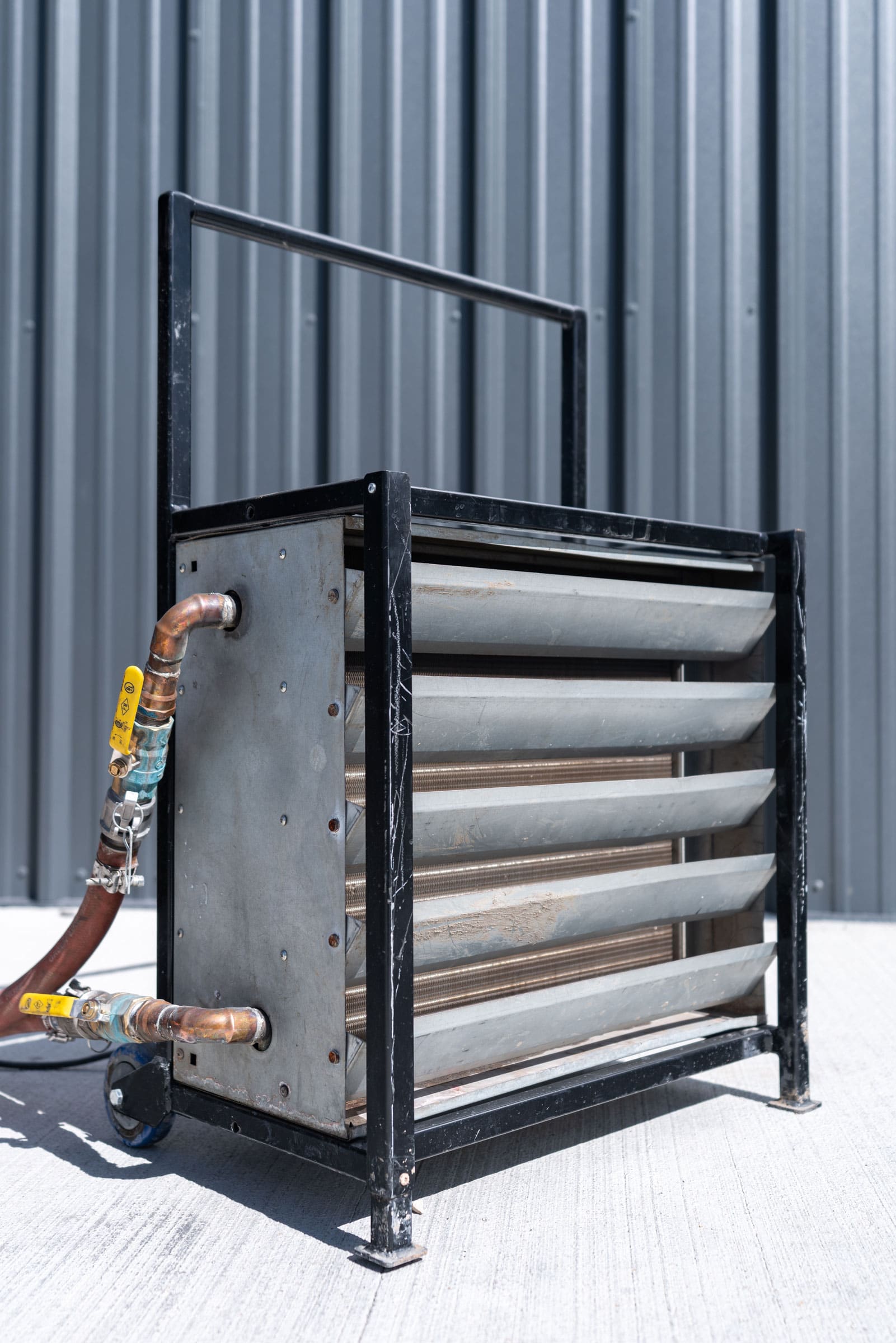When we at HeatMasterss launched our biomass hydronic furnaces, we had a rough idea of whose problems we could solve. Because these units can heat massive areas using biofuels like pellets with ultra efficiency, we thought they’d be perfect for agricultural facilities or manufacturing.
But after an informational event we held called Biomass Days, we were approached by a construction company who wanted to try taking it in a different direction. They wanted to use the biomass furnaces for a temporary heating for a school building project. Although the biomass hydronic furnaces were originally designed and built to be installed on or in buildings, due to its size and weight, we were able to put the unit on a trailer. This proved to have its own challenges, but after some minor tweaks, we produced a unit transportable by truck and capable of heating entire buildings with portable temporary heat.
The next year the company asked for three more units due to its success. Since then, many companies have used these units for foundations, ground thaw 5,000 square feet at a time, to remove 4 feet of frost, concrete setting, building construction, agricultural warehouses, and much more.
What are Biomass Hydronic Furnaces?
Biomass hydronic furnaces are very similar to conventional gas, oil, or electric boilers that you might be familiar with and provide space heating and hot water for an entire facility, but instead of using nonrenewable energies like gas, oil, or electric to produce the heat, they combust sustainable biomass products like wood chips or pellets.
Biomass hydronic furnaces use extremely high temperature gasification to produce ultra-efficient (carbon neutral) combustion. The attached bin automatically augurs precise amounts of fuel into the firebox, which heats up the water jacket and produces heat that gets pumped into the building and can be turned into hot air via space heaters on wheels or other forms of desired heat. The integrated feed bins can be filled and forgotten, often only need to refill them once a week. Automatic adjustments are made by internal sensors and dampers to ensure optimal performance and burn times.

Space heaters on wheels are easily maneuvered to areas where they’re needed. Photo courtesy of HeatMasterSS
How are Biomass Hydronic Furnaces Used?
Biomass hydronic furnaces can be used for floor heat, forced air, hot water, and much more. The unit is kept on the trailer outside, but a manifold is positioned in the building where you can add heaters easily and move heaters on a cart to where you need them—all without interacting with the unit outside where it’s safe and out of the way. We have intentionally mounted the unit on a trailer so it could be moved quickly, safely, and easily if plans change or the heat needs to be moved. Hydronic furnaces only require 220 volts of electricity to run. Using wood pellets or wood chips, each of these units can produce up to 500,000 BTUs.
In our experience, for companies that were on the fence, hydronic furnaces’ reduced need for extensive safety protocols won them over. Traditional methods can be a hassle to set up and following the necessary safety protocols can be the time-consuming.
What Maintenance is Required?
Set up time for hydronic furnaces is usually done in a few hours, and then from there it generally only needs maintenance once a week, which requires adding fuel and removing leftover ashes. The unit can be monitored and controlled reliably from any mobile device, so you don’t need to go to the unit itself to make changes.

The manifold connects to the hydronic furnace and where the heat needs to go. This can include space heaters, ground thaw, and much more. Photo courtesy of HeatMasterSS
Are Biomass Hydronic Furnaces Safe?
With conventional systems of propane or diesel fuel, the heaters are in or very near the building, which can lead to inhalation of toxic fumes as well as being a constant fire hazard. These factors mean that there are many additional safety precautions with traditional heat sources that can be expensive and cost lots of time and effort to adhere to.
Our biomass hydronic furnaces are built with modern PLC control systems, allowing us to incorporate comprehensive safety systems directly in them. You can place the unit far away from the building, as well as keeping the environmentally friendly fuel secure in a metal container at a safe distance. The heaters inside are filled with glycol and water, so they have no risk of fire or toxic hazard for the employees or pedestrians near by.
Are they Cost-Effective?
We have had several companies tell us that our units ran less than half the cost of their conventional systems that they have rented. Construction companies, in particular, have said that the biomass hydronic furnaces pay for themselves in a year or less, especially in remote areas.
Hearing the resounding approval of using this as a temporary heat solution for construction projects and builds, we have begun to expand our network of rent units, offering all inclusive and comprehensive support for those that want to try biomass hydronic furnaces and see if they really can be a game changer for their heating needs. And it’s just the beginning. Is there a way hydronic furnaces could be a game changer for you?




